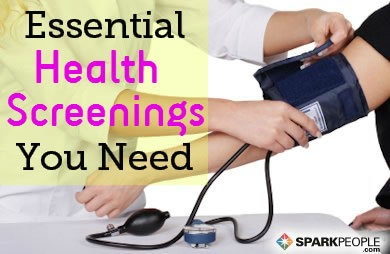|
Do you ever wonder how accurate the numbers you get from exercise machines or on-line trackers are when it comes to calories burned during exercise? You probably should, because chances are they aren’t very accurate--especially for some of the newer forms of exercise, like bootcamp programs, power yoga, kickboxing, spinning, or this new fitness sensation that's climbing up the charts right now. Unlike the old standbys such as walking, running, biking and swimming, these popular new exercise programs haven't been studied very thoroughly, so not much data is available to base estimates on. But that is beginning to change. Read on, and find out about some recent research results you can use to give your calorie burning estimates for these activities a “reality check”... The American Council on Exercise (ACE) recently did a study of a popular “bootcamp” exercise video, to evaluate its effectiveness for fitness enhancement and calorie expenditure, and compared the results to similar recent studies of some other popular exercise programs. The results might help you figure out what's really going on for you. The Bootcamp Video Study ACE commissioned researchers John Porcari, Ph.D and graduate student Kirsten Hendrickson, from the University of Wisconsin, La Crosse Exercise and Health Program, to determine the training effectiveness and calorie expenditure of a typical “cardio bootcamp” exercise program. After reviewing many different videos available, they selected The Method: Cardio Boot Camp with Tracey Mallett as the program they would evaluate because, as Porcari explained, it “has a good blend of aerobic movements and strength moves...where people were taxed pretty hard because that’s what you picture when you think of boot camp.” The only way to really know how many calories you're burning is to do your exercise while hitched up to some elaborate equipment that can directly measure how much oxygen and fuel you're actually using. In this study, that was done with 6 men and 6 women, between the ages of 19 and 29, and the following results were obtained for a 40 minute workout: Average Heart Rate 138 (men) 152 (women) Percent of Heart Rate Max 73%(m) 81%(w) Rating of Perceived Exertion13.3(m) 13.5(w) Average Cals/minute 12.0(m) 7.5(w) Highest Cals/min 15.3(m) 9.9(w) Total Cals for 40 minutes 480(m) 300(w) As you can see, this workout was challenging enough to keep everyone's average heart rate in the ideal aerobic training zone (70-85% of max), and to provide some intervals where heart rate was elevated above that range briefly, for maximum training benefit and calorie burning. Both men and women rated their own effort level as "somewhat hard to hard" on the Rating of Perceived Exertion scale. Comparison of Bootcamp Workout to other Programs These same researchers have recently done similar studies (also sponsored by ACE) with some other popular workout programs. Here's how they stack up in terms of average Percent of Maximum Heartrate achieved and calories burned per minute. Note that these figures represent results for women only, not men. The first number is the average percentage of maximum heart rate maintained for the whole session, and the second number is average calories burned per minute of exercise. Boot Camp 81% HRmax, 7.5cal/min Cardio Kick Boxing 86%HRmax, 8.1cal/min Spinning 89%HRmax, 9.6cal/min Aerobic Dance 85%HRmax , 9.7cal/min Curves 75%HRmax, 6.4cal/min Power Yoga 62%HRmax, 5.9cal/min Advanced Pilates 62%HRmax, 5.6cal/min How To Use This Information You won't be able to exactly determine your own calories per minute information using these numbers, because you probably don't exactly match the small number of women in these studies in terms of your body size and personal fitness level. The larger you are, the more calories you'll burn, and the more experienced and efficient you are at the particular exercise, the fewer calories you'll burn (which is why it's a good idea to have some variety in your exercise routine). But you can use these numbers to do a reality check on the estimates you're getting from on-line estimating software and/or your heart rate monitor. The best way to do this is, first, to think in terms of calories burned per minute, rather than total calories burned during your session. Take the total calorie burn estimate you get and divide it by the number of minutes you worked out, and then compare that number to those above. For example, if the calorie estimate you get for 60 minutes of exercise is 800 calories, that means you'd have to be burning 13.3 calories per minute. As you can see, that's a lot more than anyone in these studies achieved, so it's a pretty safe bet that the estimate is way too high. For most women, the range for moderate to high intensity aerobic exercise is going to be about 6-10 calories burned per minute. If you know your average heart rate for your session, you can also convert that into a percentage of your maximum (maximum = 220 minus your age), and see how that matches up with the numbers above. If your calorie estimate is only 300 for 60 minutes, but your average heart rate for the session was in the 65-75% of max range or more, your estimate is probably too low. So, how do your numbers compare to these--higher, lower, or about the same? |
Popular EntriesMore From SparkPeople
|

.png)
.jpg)









.png)


.jpg)